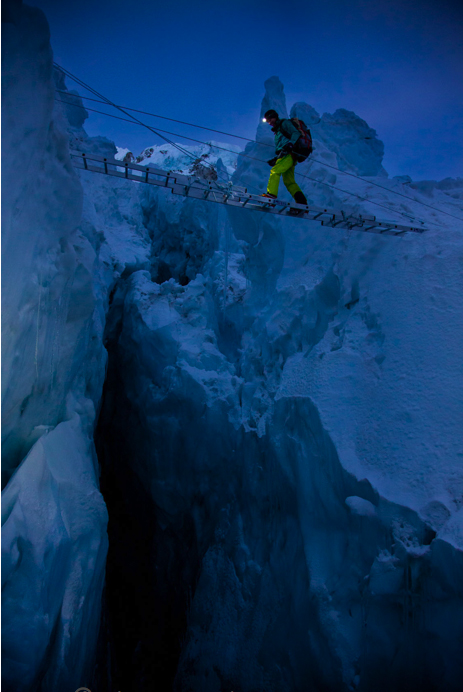According to Beverly Serrell in Exhibit Labels: An Interpretive Approach, journalism is not a good model for interpretive writing. “It is a bad model because newspaper articles are written with the assumption that most readers will not read the whole thing. After the headline or subhead that communicates a short teaser or summary, the body of the article that follows has the most important information up front, then goes into detail, often repeating information.”[1]
Interpretive writing should start with the details and then move out to more general information. For a perfect example of this, we can take a page from National Geographic Magazine. The folks at National Geographic know that their readers flip through the magazine looking at pictures and reading the captions, and then decide if they want to read the whole article. As a result, they have become masters at caption writing; they start with the details and add more information about the subject of the picture at the end. Let’s deconstruct this example:

Team member Hilaree O’Neill steps across a bridge of aluminum ladders lashed together above a crevasse in the Khumbu Icefall. Considered one of the most unpredictable hazards on Everest, the icefall is an ever shifting labyrinth of loose, jagged blocks.[2]
The first sentence of this caption, part of a story about climbing Mount Everest, tells you in very compact terms not only what you are looking at, but exactly who it is. That helps you connect with the human part of the story. But where is the Khumbu Icefall and what is an icefall? That’s answered in the next sentence, but notice that the second sentence doesn’t start out answering the where and what question. It grabs your attention by putting this information first: Considered one of the most unpredictable hazards on Everest.
Here’s another one:

Australia—Anzac the kangaroo and Peggy the wombat—each about five months old—snuggle at the Wildabout Wildlife Rescue Centre in Kilmore, Victoria. Both animals’ mothers were killed by cars. Officials hope to return them to the wild eventually.[3]
This is not just any kangaroo and wombat. This is Anzac and Peggy. The first sentence of the caption helps us make that human connection by disclosing the human names bestowed on these two animals. We don’t need to wonder where the Wildabout Wildlife Rescue Center is, because the “dateline” beginning, Australia – answers that question. But why are Anzac and Peggy in a rescue center? The second sentence holds the answer: their mothers were killed by cars. Notice that these animals weren’t “orphaned.” Their mothers were killed by cars. Being very specific in this case helps send an emotional message to readers, quite possibly encouraging them to be more careful with their cars. What will happen to Anzac and Peggy? The third sentence answers that question.
Go to the library or head to the bookstore and pick up a copy of National Geographic. Study the way the photo captions anchor the reader with specific visual information first, go from the specific to the more general, anticipate the readers’ questions about the image and answer those questions in compact and concrete ways.
